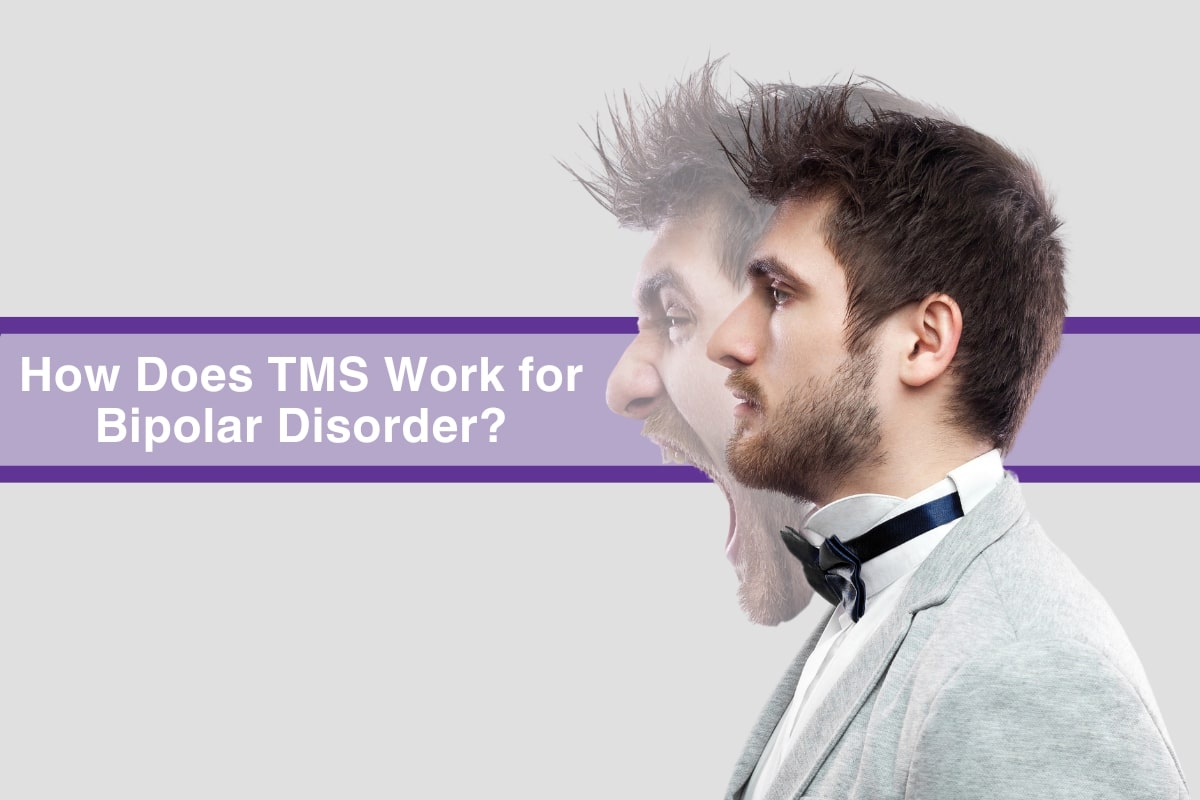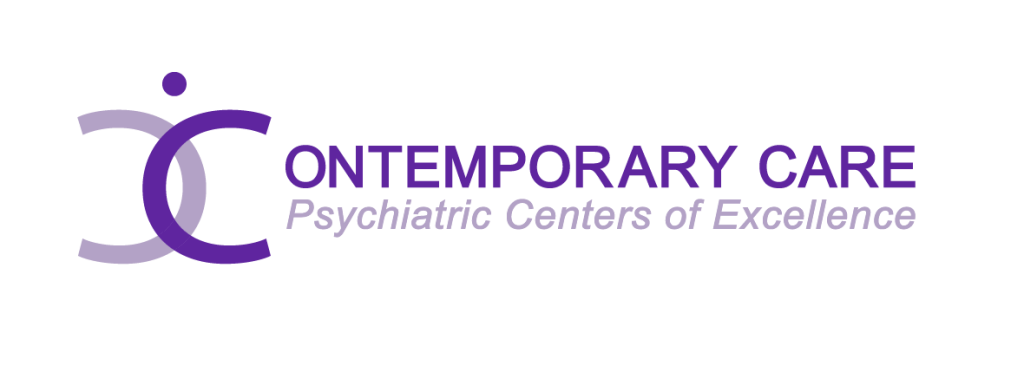Preparing for Transcranial Magnetic Stimulation treatments can induce a sense of apprehension, especially when confronting an innovative technique like TMS for Bipolar Disorder symptoms. This article aims to demystify the preparation process by offering counsel and insights to optimize the efficacy of your TMS sessions according to Evidence-based guidelines for treating bipolar disorder. Whether embarking upon TMS and bipolar disorder for the first time or having experienced previous sessions, applying these recommendations will maximize the benefits of your care.
Understanding TMS and Bipolar Disorder
What is TMS?
Transcranial Magnetic Stimulation employs magnetic fields to noninvasively stimulate targeted neurons, primarily treating Major Depressive Disorder. Preliminary studies demonstrate this innovative approach also shows promise for addressing bipolar and unipolar depression. Magnetic pulses penetrate the scalp to activate regions like the left dorsolateral prefrontal cortex linked to mood.
How Does TMS Work for Bipolar Disorder?
By targeting the left dorsolateral prefrontal cortex implicated in mood governance, TMS may help stabilize temperamental oscillations and reduce indicators of both bipolar depressive and manic episodes.
Benefits of TMS for Bipolar Disorder
Non-Invasive Nature
A principal advantage of TMS lies in its noninvasive quality, obviating surgery or pharmaceuticals. Unlike psychotropic medications vulnerable to diverse adverse effects, TMS generally permits tolerance with only transient headaches or scalp discomfort reported.
Minimal Side Effects
Unlike traditional medications, TMS has minimal side effects. While generally well-tolerated, some patients experience temporary mild headaches or scalp discomfort during the brief treatments. However, these minor side effects typically swiftly dissipate with no lasting effects.
Effectiveness
Outcomes from clinical trials and studies suggest TMS holds efficacy in mitigating bipolar disorder manifestations, providing relief for many treatment-resistant patients.
Preparing for Your First Session of TMS for Bipolar
Consult with Your Doctor
Before starting TMS, have a detailed discussion with your doctor. Understand the procedure, its benefits, and any potential risks. Your doctor will conduct a psychiatric evaluation to determine if you are a good candidate for TMS.
Medical Evaluation
You may need a thorough medical evaluation to ensure you’re a good candidate for TMS. This might include a physical exam and possibly some lab tests.
What to Expect During a Session of TMS for Bipolar
The Procedure
During a TMS session, a magnetic coil is placed on your scalp, near your forehead. Short electromagnetic pulses are then administered through the coil to stimulate the brain’s prefrontal cortex.
Steps Involved in the Procedure
- Initial Setup: The technician will position the magnetic coil on your scalp. This coil generates the magnetic pulses needed for the treatment.
- Mapping the Brain: A brief mapping session is conducted to identify the precise location for stimulation. This ensures that the magnetic pulses target the correct area of the brain.
- Administering Pulses: Once the correct position is determined, the technician will begin administering the magnetic pulses.
- Monitoring: Throughout the session, the technician will monitor you to ensure that the procedure is progressing smoothly and to make any necessary adjustments.
Duration and Frequency
Individualized sessions usually span 30 to 60 minutes once or twice weekly. Most patients require several weeks of periodic treatments to experience meaningful symptom remission. The frequency may lessen throughout therapy, with follow-ups extending to once per month, contingent on the response and needs of the specific patient.
Frequency and Number of Sessions
- Initial Phase: Typically, patients undergo TMS sessions five days a week for about four to six weeks.
- Maintenance Phase: Some patients may need maintenance sessions once the initial treatment phase is complete.
- Total Number of Sessions: The total number of sessions can vary but often ranges from 20 to 30 during the initial phase.
During the Session
- Comfort: You will sit in a comfortable chair, similar to a dentist’s chair, during the session.
- Awareness: You will be awake and alert throughout the procedure.
- Sensation: Some patients report feeling a tapping sensation on their scalp or a mild headache during and after the session. These sensations usually diminish as the brain adjusts to the treatment.
Post-Session Considerations
- Immediate Effects: Most patients can resume their normal activities immediately after the session.
- Symptom Tracking: It’s important to track any changes in your symptoms and report them to your doctor.
- Regular Assessments: Your doctor will conduct regular assessments to monitor your progress and determine the need for any changes in your treatment plan.
Tips for a Successful Session of TMS for Bipolar Disorder
Stay Relaxed
- Deep Breathing: Practise deep breathing exercises before and during the session to help calm your nerves.
- Meditation: Consider meditating for a few minutes before your session to achieve a relaxed state of mind.
- Comfort Items: Bring items that help you relax, such as a favorite book, music, or a stress ball.
Communicate with Your Technician
- Report Discomfort: If you experience any discomfort during the session, inform your technician immediately.
- Ask Questions: Don’t hesitate to ask questions about the procedure. Understanding what’s happening can help reduce anxiety.
- Feedback: Provide feedback on your experience to help the technician make any necessary adjustments for future sessions.
After Your Session of TMS for Bipolar Disorder
Monitor Your Symptoms
- Symptom Diary: Keep a diary to track your symptoms daily. Note any changes in mood, sleep patterns, and overall well-being.
- Share with Your Doctor: Regularly share your symptom diary with your doctor to help them assess the treatment’s effectiveness.
Follow-Up Appointments
- Regular Check-Ins: Schedule regular follow-up appointments with your doctor to discuss your progress.
- Adjustments: Be open to making adjustments to your treatment plan based on your doctor’s recommendations and your symptom tracking.
Lifestyle Tips for Bipolar Disorder Patients
Maintain a Healthy Diet
- Balanced Meals: Ensure your meals are balanced with a mix of carbohydrates, proteins, and healthy fats.
- Omega-3 Fatty Acids: Include foods rich in omega-3 fatty acids, such as fish, flaxseeds, and walnuts, which are known to support brain health.
- Limit Sugar and Caffeine: Reduce your intake of sugar and caffeine, as they can cause mood swings and disrupt sleep patterns.
Regular Exercise
- Routine Workouts: Aim for at least 30 minutes of exercise most days of the week. This can include walking, jogging, cycling, or swimming.
- Mind-Body Exercises: Incorporate mind-body exercises like yoga or tai chi, which can help reduce stress and improve mood.
- Consistency: Consistency is key. Make exercise a regular part of your routine to reap the most benefits.
Adequate Sleep
- Sleep Schedule: Establish a regular sleep schedule by going to bed and waking up at the same time every day, even on weekends.
- Sleep Environment: Create a sleep-friendly environment by keeping your bedroom cool, dark, and quiet.
- Bedtime Routine: Develop a relaxing bedtime routine, such as reading a book, taking a warm bath, or listening to calming music.
- Limit Screen Time: Avoid screens (phones, tablets, computers) at least an hour before bedtime, as the blue light can interfere with your sleep.
Support System
Lean on Family and Friends
Having a strong support system can make a big difference in managing bipolar disorder. Surrounding yourself with loved ones who provide empathy, compassion, and assistance in adhering to treatment protocols is invaluable for stability
Join Support Groups
Consider joining a support group for individuals with bipolar disorder. Sharing experiences with others coping with similar challenges through support groups brings solace and hard-won advice from shared ordeals. Practical wisdom from veterans of the episodic rollercoaster can illuminate new pathways.
Mindfulness and Relaxation Techniques
Meditation
Engaging meditation as a daily regimen trains the mind to remain anchored amid turbulence and lessens life’s stresses that exacerbate symptoms. Regular mindfulness can defuse depressive episodes at their roots and curb manic tendencies before they escalate out of control.
Yoga
Yoga combines physical exercise with mindfulness, making it an excellent activity for managing bipolar disorder. It can improve flexibility, reduce stress, and enhance overall mental health.
Education and Awareness
Learn About Bipolar Disorder
Consuming knowledge related to every facet of the disorder arms one with insight into this multifaceted condition and its rigorous demands. Continuing education from published research, seminars, and evolving best practices strengthens readiness to meet bipolar disorder challenges.
Stay Updated on TMS and Bipolar Disorder
Awareness of novel therapies under investigation and those recently approved offers hope that each new day may bring relief closer. Staying updated on cutting-edge discoveries like transcranial magnetic stimulation ensures access to advancing care improving the quality of life for all facing this condition
Medication Management
Take Medications as Prescribed
Bipolar disorder requires strict adherence to treatment to avoid the peril of relapsing symptoms. Failing to take medication as one’s doctor-directed or abruptly going off it can precipitate a return of the turmoil.
Discuss Side Effects
If undesirable effects surface from the drugs confers with the doctor right away. They may opt to try lowering the dosage or switching to an alternate prescription.
Dealing with Mood Swings
Identify Triggers
Discovering what activates one’s volatile shifts in temperament can facilitate better command over them. Keeping a diary of moods may expose recurrent sparks and provocateurs, be they stress, lack of rest, or certain victuals.
Develop Coping Strategies
Work with your therapist to develop coping strategies for when you feel a mood swing coming on. This might include relaxation techniques, exercise, or reaching out to your support system.
Emergency Plan
Have a Plan in Place
It’s important to have an emergency plan in place in case you experience severe mood disorders or crisis. This plan should include emergency contacts and steps to take to ensure your safety.
Know When to Seek Help
Don’t hesitate to seek help if you’re feeling overwhelmed. Contact your doctor or therapist immediately if you’re in crisis. It’s essential to recognize the signs of a major depressive episode or manic episode and act quickly.
TMS Maintenance Therapy
Long-Term Treatment
For some patients, repetitive transcranial magnetic stimulation may be recommended as a long-term maintenance therapy to prevent relapse. Regular sessions can help maintain the benefits achieved during the initial treatment phase.
Ongoing Evaluation
Your doctor will continue to evaluate your progress and adjust your treatment plan as needed. This may involve changes to the frequency of your TMS sessions or the introduction of other therapies.
Breakthrough Device Designation and FDA Approval
Innovative Treatments
TMS has gained FDA breakthrough status for treating major depressive disorder and is exploring applications for other conditions, including bipolar disorder and obsessive-compulsive disorder. With its ability to target distinct regions of the brain implicated in these illnesses, it shows tremendous potential.
Advancements in TMS
Ongoing research and clinical applications of TMS continue to expand its potential uses. Innovations in stimulation parameters and biomarker-driven treatment development are promising for the future of brain stimulation therapies.
Preparing for a TMS therapy session for bipolar disorder involves more than just showing up at the clinic. By understanding the procedure, communicating openly with your care team, and prioritizing overall wellness, you can optimize the benefits of TMS and enhance your quality of life. Remember, managing bipolar disorder is an ongoing process, and with diligent self-care and social support, stability is achievable.
FAQs
1. What is the success rate of TMS for bipolar disorder?
TMS for bipolar disorder has shown promising results for many patients, but success rates can vary. It’s best to discuss your specific case with your doctor.
2. Are there any side effects of TMS?
While generally well-tolerated, some patients report mild headaches or scalp tingling.
3. How long does it take to see results from TMS?
Response times vary – for some brief improvements emerge within weeks, whereas others require more extended treatment.
4. Can TMS replace medication for bipolar disorder?
TMS can be an effective part of a comprehensive treatment plan, but it’s not necessarily a replacement for medication. Discuss your treatment options with your doctor.
5. Is TMS for bipolar disorder covered by insurance?
Coverage can vary by insurance provider. Check with your insurance company to see if TMS is covered under your plan.
Discover the Difference at Contemporary Care Centres
At Contemporary Care Centres, our philosophy emphasizes personalized psychiatric care, acknowledging no two journeys are identical. Led by global leader Dr. Tarique Perera, the founding president of the Clinical TMS Society, brings unmatched expertise and compassion to our practice. With over 1500 members in 45 countries, our society sets the global standard for TMS practice principles. Dr. Perera’s contributions have positioned the center at the vanguard of Transcranial Magnetic Stimulation, with a proven track record of helping more patients than any other facility nationwide. Our collaborative model fuses medical and mental health professionals for comprehensive support. We excel in traditional treatments such as medication management and psychotherapy and have achieved national recognition for our groundbreaking TMS and Spravato (esketamine) therapies. Our experience underscores TMS as a safe and effective option across diverse populations, from children to seniors to pregnant women. We have assisted conditions spanning unipolar depression, childhood depression, OCD, PTSD, GAD, Parkinson’s, Alzheimer’s, chronic pain, fibromyalgia, autism, traumatic brain injury, schizophrenia, and bipolar depression. At Contemporary Care Centres, we meet weekly to discuss complex patient cases, ensuring that every individual receives the collective wisdom and specialized insights of our entire team. Distinct from practices relying on lone practitioners, our integrated community draws on collective expertise, guaranteeing personalized care addressing unique needs through empathy and evidence-based care.
Join us at Contemporary Care and experience the difference that expert, compassionate, and personalized psychiatric care can make. Contact us today to schedule your consultation and take the first step towards a healthier, happier future.




